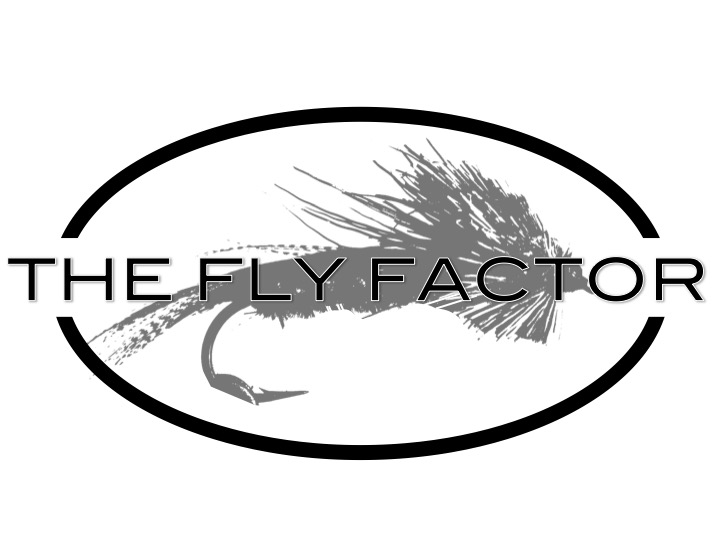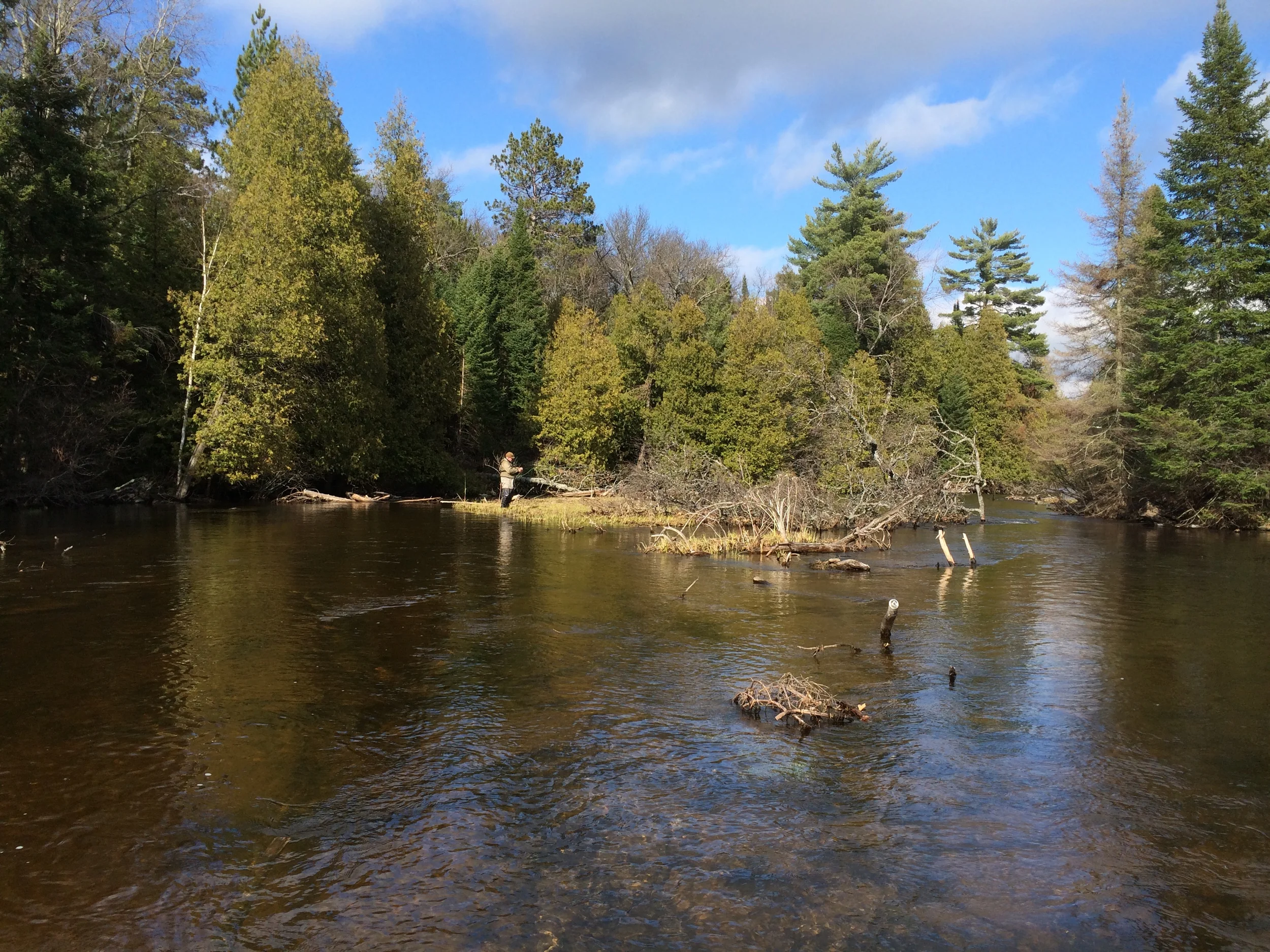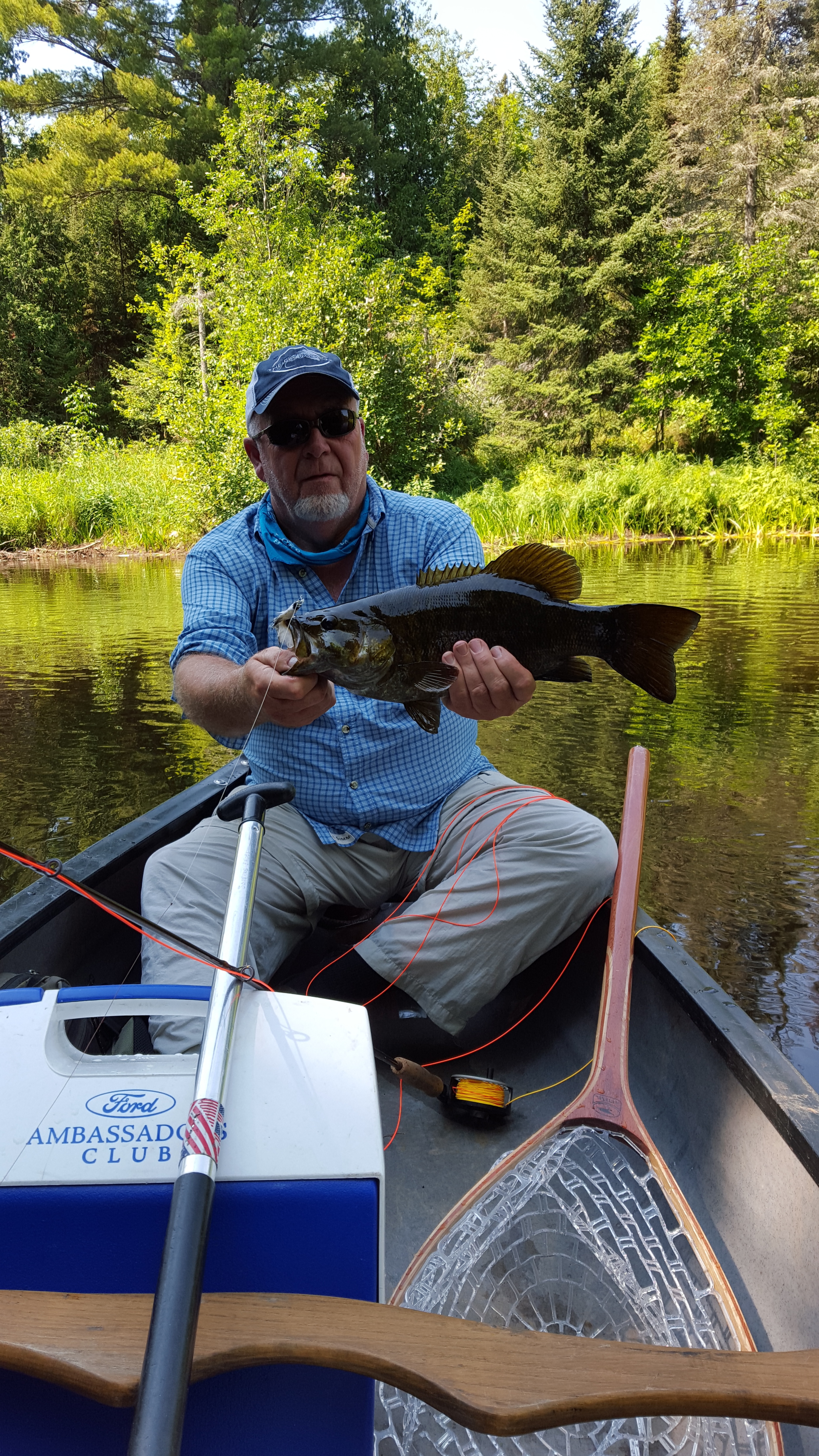It seems that one can hardly read about streamer fishing these days without hearing about swinging a fly. I am not questioning the effectiveness of this technique ,as this is and has been my personal method of streamer fishing for many years. I have employed this technique for Trout and SmallmouthBass
with good success . Though ,I have found that with trout if I am able to cast directly upstream or up and across and strip the fly directly back to me ,I have a lot more hook ups. One issue here would be the amount of weight on the particular fly and the distance of the cast. It doesn't take long to strip a fly back in a fast current. Even with a long cast,It can be quite a workout .
I will add here ,that though the technique for swinging a streamer for trout and smallmouth is basically the same,I have found this anomaly. A Strike from a trout with no hook up usually means its time to move on. A smallmouth, not so much. Another way to describe the inherent difference between the take of a trout and that of a smallmouth might be explained like this.......a trout takes a swipe at the streamer and feels the sting of the hook ( or not )and says ,hum...I don't believe that was a food item!
A smallmouth on the other hand may think,..give me another shot at that thing whatever it was !
My intent here ,before I digress into the beaten to death subject of swinging a streamer ,is to discuss fishing a nymph on the swing.
Let me qualify this by saying for what it's worth,that I am a nymph fisherman when it comes to Trout. Drop me off on a unfamiliar stream and,unless there is evidence that a hatch is 'on' ,if allowed only one type of fly it would definitely be a nymph. Show me a rising trout during a sporadic hatch, and I will swing a nymph past it.
I have spent thirty years fishing with a nymph ninety percent of the time. I have been fishing with friends who will take up a position on a log,lean against a tree,light a smoke and wait. Wait for a reason to fish with a dry fly. I always comment that ," I came to fish." I will never criticize the joy of having a Trout rise to a dry fly. Who would ? And I am not foolish enough to stick with my nymph rig when there is obvious surface activity taking place and the Trout are refusing my sub-surface offering. I do carry a few drys in my pouch for this reason.
Almost all the nymphs I tie are weighted. Either a bead head or a wrap of tungsten .
I have never tied a nymph to match a traditional pattern. None of the ones we are all familiar with look anything more like the natural than what I tie.
Here is a simple tip....when on the stream,bend down,reach in the water,and pick up a stone. Maybe a baseball size one. Turn it over.Look at what is crawling around on it and study it for a moment. Then go home and tie something that looks like that.
Something "buggy". That's it. You don't need to go to YouTube and watch some dude tie a Prince nymph,a Hares ear,or a myriad of patterns that are just that,patterns. However,if you are one of those traditional people that has to have a blueprint for every venture into the unknown,you know the guy who actually SAVES the directions to a "some assembly required"type of whatever well , this may all be too risky for you.
My point here is...this is the place you can experiment. Step out of the norm and have some fun. Explore . I have no reason to suggest that traditional nymph patterns don't work. That would be foolish. They do work of course.
I just feel that this is the area that you can create something on your own and enjoy the additional pleasure that comes with tying a fly of YOUR design and catching a trout with it !
Now, about the presentation . I like to cast down and across. I will sometimes even mend the line to the downstream side of the fly to create more of a 'belly' in the line. This also helps to present the fly sideways to the trout. It appears as though the fly or natural, is swimming right in front of the fishes nose.This is always what I try to imagine when I place the fly where I want it.That it is going to swim directly in front of a trout and all it has to do is open it's mouth or lunge forward to eat it. Not having to chase it,but so close and tempting that it causes a reaction bite. I must back up here and explain that , this whole technique works well in a moderate to slower flow or gradient. Some water is simply to fast to swing a small fly .
Sometimes in fast water you will move the fish and feel a bump but not get a hook up. You must decide through trial and error or plain experience if you need to slow the fly down.
If you feel that the fly is moving too fast ,do an upstream mend and 'stall ' the fly just before it enters the fish zone.
Another technique I employ is ,to let my fly line straighten out downstream, then lift my rod tip to bring the fly back toward me,then roll cast a downstream loop in the line without picking the fly out of the water. This will when the line catches up to the leader swing the fly at a slightly slower rate of speed.
Roll casts. I rarely back cast when fishing down and across. I have fished for hours and covered a half mile of water and only used a roll cast the entire time.
It's easy, takes less effort, saves flies and , I am able to place the fly with much more accuracy . A weighted fly is not that much fun to false cast.
Learning to cast a fly in general with a dry fly, can be done on the lawn. That's all about timing and loop.
Learning to roll cast , just add water. You need the resistance and drag on the fly line from the water to turn the line over to its full extension.
Though to some and maybe most fly anglers, maneuver of the roll cast is elemental and part of their repertoire . I personally rarely see another angler using the roll cast up or down. Though in fairness ,my survey of how many anglers use a roll cast has a small demographic . Mostly because I try real hard to fish where I do not see other anglers.
My leader set up is typically shorter and heavier . This type of presentation puts the fly in front of the fish before the leader ,so you can shorten up .
Also,you will occasionally get a violent strike that comes against an already taut leader that the current is pulling on with virtually no slack. I have had some fish with some weight break off on the take.
One thing I have forced myself to do to reduce the numbers of break offs on the take is....hold the line loosely in my left (line) hand and still maintain control. It is the most efficient way to create slack to allow for shock when a fish hits that moving fly.
If you have a fairly new and expensive rod chances are it has a fast tip.
If you are trying to learn to roll cast and seem to be working to hard at it, Try a slower action or medium action rod. More parabolic if you will.
I suppose some may disagree with me about slower rods for roll casting, but to me it is a no brainier .
I own several fast action rods. I love them.The faster the better for casting big flies or streamers,or even dry flies for that matter. But when I am on a skinny piece of water and know I will be roll casting, I grab a slower rod.
Most nymph fisherman nowadays use a strike indicator. A bobber.
This is a very effective way to fish with a nymph downstream. It allows me in faster water to mend and slow the fly down and let it drop lower into the fish zone. This is the same effect as casting directly upstream and retrieving the line enough to be able to lift the rod tip when a strike or take occurs .
The other tried and true method of presenting a nymph is "high sticking".
This is a up and across cast on a shorter line and holding the rod tip fully extended to keep as much fly line off the water as possible thus creating less drag and allowing the fly to ride closer to the bottom where the fish are.
This can either be done with a strike indicator,or the traditional way of watching the end of the fly line to stop or twitch forward indicating a take or bottom. Either way,this is when you instinctively lift to set the hook.
I recently fished a stream in Tennessee that was of a fairly steep gradient and full of rock of all sizes. This was a perfect size and flow for my favorite method of swing ing a bead head nymph. I had never fished this particular stream before . The water was slightly below' bank full ' and appeared very wadeable .
The first hour moved no fish and I changed flies several times, adding a small split shot a foot above the fly. I finally caught a 10" rainbow quite by accident as my line trailed below me as I was distracted. This gave me hope. On a deeper run on the far bank, I reeled up and added another small shot above the other one and cast again.
A solid thump took me by surprise and I had a large fish on for three seconds before he came off. I re -cast to the same run ,and on the third cast I felt the same take and was into another very good fish. As I don't use a net much anymore ,I played the fish to the shallow bank where I eventually beached it.
It was a beautiful ,solid 18" rainbow with a very wide and bright crimson stripe from its large gill plate all the way down its side. I was able to snap a quick photo with my phone before reviving him and watched him stabilize, remain upright ,and slowly swim away.
I had covered some good water before this run that held these two good fish but my fly was moving too fast and riding too high. The added weight put the fly in the zone and slowed it down enough to become attractive to the fish without having to expend too much energy and not have to chase it. This was very early spring and the water was below normal temps. I have seen trout chase a large streamer in these conditions ,as a larger potential meal apparently is worth the effort.
Experience will tell you about the swing speed and fly depth. It is a method that goes against what most fly fisherman have ingrained in their heads about drag and mending. It is hard to convince some to mend DOWMSTREAM and create a belly in the line that causes the fly to be presented across in front of a trouts nose .
Give it a try.
PS.......the The Fly Factor will be airing some video on this method in the very near future ...so keep checking us out. We are under construction but adding new media weekly .
Mark Karaba
The Fly Factor










